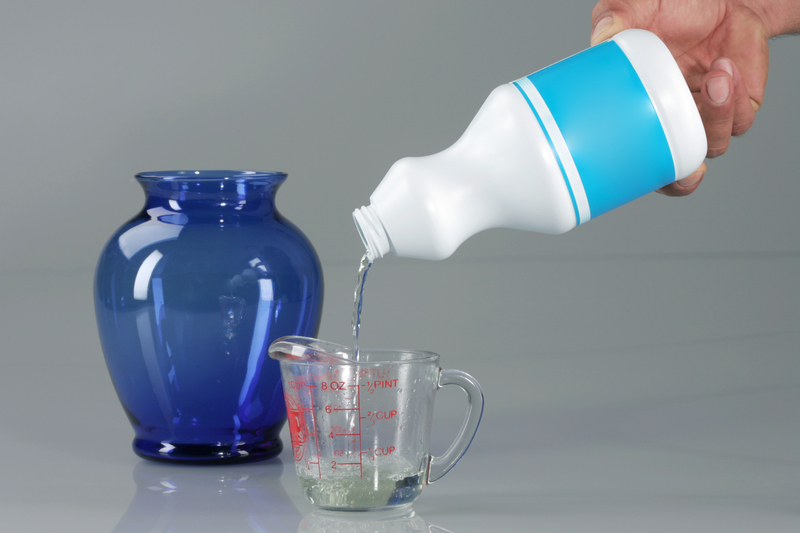Combat Mould on Window Sills with These Simple Steps
Posted on 23/06/2025
Combat Mould on Window Sills with These Simple Steps
Mould on window sills is a common nuisance that can affect the indoor air quality, aesthetics, and structural integrity of your home. More than just an unsightly growth, it can also be hazardous to your health, causing allergies and respiratory issues. Luckily, tackling mould does not have to be a daunting process. In this comprehensive guide, we will show you how to combat mildew and mould growth on your window sills using simple, actionable steps. Follow these techniques to keep your windows mould-free and your living space healthy.
Understanding Mould: What Causes Mould on Window Sills?
Before we discuss how to eliminate and prevent mould on window ledges, it's vital to understand what causes it. Mould is a type of fungus that thrives in damp, humid, and poorly ventilated environments. Window sills, especially those in bathrooms, kitchens, and basements, are prime targets because:
- Condensation: Warm, moist air from inside the house meets cold glass, leading to water droplets collecting on sills.
- Poor Ventilation: Little airflow lets moisture linger, feeding mould spores.
- Leaking Windows: Cracks or poor sealing let in water, further increasing humidity.
- Dust and Dirt: These provide an organic food source for spores to take hold.
Why Is Mould on Windows Dangerous?
Prolonged exposure to mould on window frames and sills can cause health problems. These include:
- Allergic reactions (sneezing, red eyes, rash)
- Respiratory problems--especially in those with asthma
- Worsening of pre-existing health conditions

Step-by-Step Guide to Removing Mould from Window Sills
Ready to begin? Here are the steps you should follow to effectively remove mould from window sills and keep it from coming back:
1. Gather Your Cleaning Supplies
For safe and efficient cleaning, you'll need:
- Gloves (rubber or disposable)
- Protective goggles and a mask (to avoid inhaling mould spores)
- A spray bottle
- White distilled vinegar
- Baking soda
- Dish detergent
- Old toothbrush or small scrubbing brush
- Microfibre cloths
- Paper towels (for disposal)
- Optional: Commercial mould remover
2. Ventilate the Area
Airflow is your ally. Open the window if possible to ensure fresh air while you clean, and keep the area well-ventilated to avoid inhaling any spores.
3. Apply White Vinegar
Vinegar is a powerful mould killer. Pour undiluted vinegar into a spray bottle and thoroughly mist the affected areas. Let it sit for at least one hour. Vinegar kills up to 82% of mould species and is a safe, eco-friendly choice.
4. Scrub the Surface
- Dip your brush in a mix of water and a squirt of dish soap.
- Scrub the window sill vigorously, paying attention to crevices and corners where mould hides.
- For stubborn spots, sprinkle baking soda onto the brush before scrubbing. The abrasiveness helps lift mould.
5. Rinse and Dry
- Wipe down the cleaned area with a damp microfibre cloth to remove residue.
- Use a dry towel or paper towels to absorb excess moisture. Mould loves moisture, so it's essential everything is bone dry!
6. Inspect & Repeat if Needed
If any stains remain, reapply vinegar or try a specialised mould cleaner. Always finish by thoroughly drying the area. Dispose of used paper towels and clean gloves outside your home to avoid spreading spores.
Preventing Mould from Returning on Window Sills
Once you've cleaned up, prevention is key. Here's how to stop mould on window sills before it becomes a recurring issue.
Enhance Ventilation
- Open windows regularly to increase airflow.
- Use extractor fans in kitchens and bathrooms.
- Consider installing window vents.
Control Humidity
- Keep indoor humidity below 60%. Ideally, aim for 40-50%.
- Run a dehumidifier in damp rooms.
- Dry laundry outdoors when possible.
Ensure Proper Sealing
- Check that window caulking and weather stripping are intact.
- Repair cracks or leaks promptly to avoid future moisture ingress.
Regular Cleaning Routine
- Wipe down window sills weekly with a dry or slightly damp cloth.
- Occasionally use a vinegar-water solution for a natural mould deterrent.
- Remove dust and dirt buildup--remember, organic matter nourishes mould.
Monitor Indoor Plants
Plants on or near window sills can add extra moisture and organic material. Make sure pots have trays, don't overwater, and clear fallen leaves promptly.
Natural Alternatives for Mould Removal
If you prefer green cleaning solutions, several household items can help get rid of mould on window sills:
- Lemon juice: Its acidity can break down mild surface mould and leaves a fresh scent.
- Tea tree oil: Mix a teaspoon with a cup of water in a spray bottle. It's a powerful antifungal. Let it sit without rinsing.
- Hydrogen peroxide: Spray 3% hydrogen peroxide, let sit for 10 minutes, then scrub and dry.
Note: Never mix cleaning agents like vinegar and hydrogen peroxide together in one container, as they may interact dangerously. Always test any cleaning method on a discreet area first.
Special Tips for Different Window Materials
Wooden Window Sills
Wood is porous, so it absorbs moisture and can be harder to keep mould-free. Make sure sills are properly sealed and varnished, and never leave wood damp after cleaning. Sand and re-paint if necessary.
uPVC and Aluminium Sills
These are less prone to deep mould growth but dirt and dust can still accumulate. Regular wiping with vinegar solution will prevent future issues.
When to Call a Professional
If the mould on your window sills or frames is extensive (covers more than a square metre), keeps coming back, or if it's accompanied by significant water damage or a musty smell throughout the house, you may need professional help. A qualified mould remediation expert can assess whether there's a deeper problem, such as hidden leaks, wall cavities, or insufficient insulation.

FAQs - Your Top Questions about Mould on Window Sills Answered
Can I use bleach to clean mould off window sills?
Bleach is commonly used, but it's not ideal for porous materials like wood and can be harsh on the environment. Vinegar is generally safer and more effective for window areas.
Is mould on window sills dangerous to my pets?
Yes, pets can suffer allergic and respiratory effects from mould exposure too. Always clean thoroughly if you have animals at home.
How can I prevent condensation on windows?
- Improve ventilation (open windows, use fans, install vents)
- Use a dehumidifier
- Insulate and draft-proof windows
Should I repaint mouldy sills?
Only after all mould has been completely removed and the area is dry. Otherwise, paint will peel and the problem will persist underneath.
Conclusion: Keep Your Window Sills Clean and Mould-Free
In summary, dealing with mould on window sills is all about vigilance, good cleaning habits, controlling moisture, and proper ventilation. Whether you're facing a small, new growth or keeping persistent outbreaks at bay, following these simple steps will help you win the fight against mould.
- Clean regularly and act quickly at first sign of mould
- Use the right cleaning agents for the job
- Keep your home dry and well-ventilated
- Repair leaks and cracks promptly
Implementing these practices will keep your home's windows looking fresh and, more importantly, preserve your health and property value. Say goodbye to unsightly and potentially hazardous mould--your windows (and your lungs) will thank you!
Stay proactive and enjoy a brighter, cleaner home with our tried-and-tested mould prevention tips for window sills!




